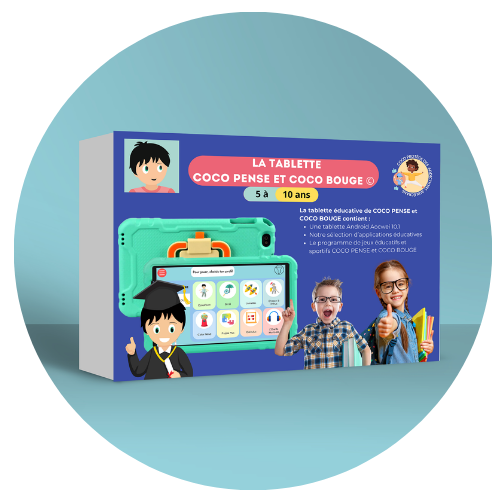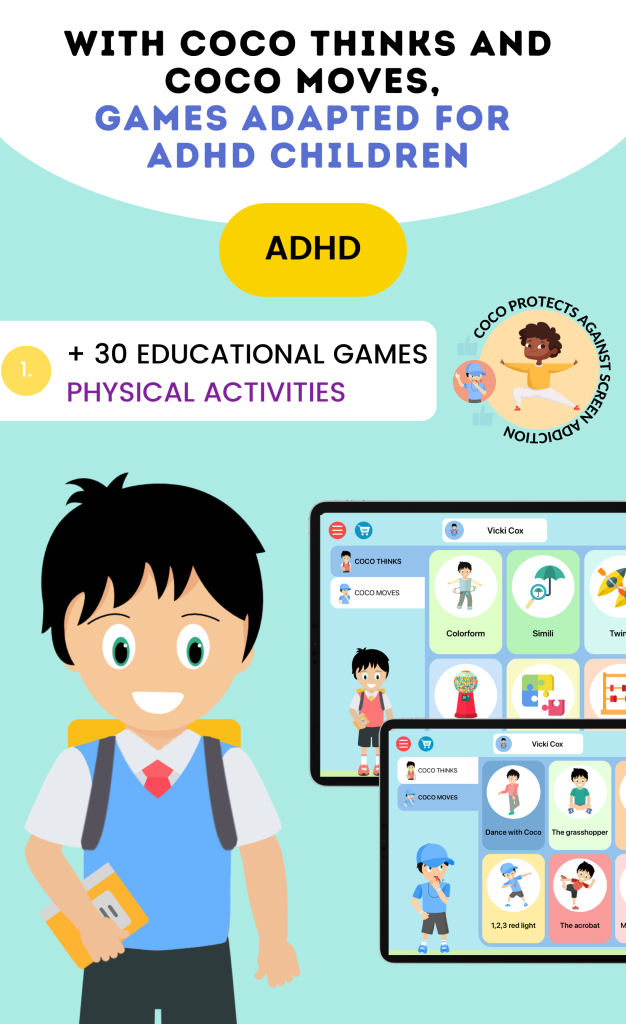Attention Deficit Hyperactivity Disorder (ADHD) is a neurodevelopmental disorder that affects a significant number of children worldwide. Characterized by persistent patterns of inattention, hyperactivity, and impulsivity, ADHD can impact various aspects of a child’s life, including their academic performance, social interactions, and overall well-being. Understanding ADHD is crucial for parents, educators, and caregivers, as it allows them to provide the necessary support and interventions that can help children thrive.
The exact cause of ADHD remains unclear, but research suggests that a combination of genetic, environmental, and neurological factors may contribute to its development. Children with ADHD often exhibit behaviors that can be misunderstood as mere mischief or lack of discipline. However, it is essential to recognize that these behaviors stem from a neurological condition that affects their ability to focus, control impulses, and regulate their energy levels.
By fostering a deeper understanding of ADHD, we can create a more supportive environment for affected children.
Common Signs and Symptoms of ADHD
Identifying Attention-Deficit/Hyperactivity Disorder (ADHD) in children can be complex, as symptoms often vary from one individual to another and may resemble typical childhood behaviors. However, certain signs are consistently observed in individuals with ADHD, particularly in the areas of inattention, hyperactivity, and impulsivity.
Inattention
Children who exhibit symptoms of inattention may display the following behaviors:
-
Difficulty sustaining attention
-
Trouble focusing on tasks or play activities for extended periods, especially those that require sustained mental effort (e.g., reading, homework).
-
-
Frequent careless mistakes
-
Errors in schoolwork or tasks that seem to result from a lack of attention to detail rather than a lack of understanding.
-
-
Failure to follow through on instructions
-
Starting tasks but quickly losing focus or becoming sidetracked, resulting in incomplete assignments or chores.
-
-
Difficulty organizing tasks and activities
-
Struggles with planning, time management, and prioritizing steps in multi-step directions.
-
-
Easily distracted by external stimuli
-
Losing focus due to background noise, visual distractions, or even internal thoughts.
-
-
Forgetfulness in daily activities
-
Forgetting to bring items to school, complete homework, or remember scheduled appointments or obligations.
-
-
Frequent loss of important items
-
Misplacing school supplies, books, toys, or other items needed for daily functioning.
-
Hyperactivity
Hyperactivity symptoms often present as excessive movement or verbal activity that is inappropriate for the setting:
-
Fidgeting or squirming in seat
-
Inability to remain still, tapping hands or feet, or shifting constantly while seated.
-
-
Inappropriate running or climbing
-
In younger children especially, this may be evident in classroom or social settings where such behavior is not appropriate.
-
-
Difficulty playing quietly
-
Prefers loud, active play and struggles with calm, independent activities.
-
-
Excessive talking
-
Frequently speaks out of turn or dominates conversations without awareness of social cues.
-
Impulsivity
Impulsive behavior can lead to challenges in both academic and social contexts:
-
Blurting out answers
-
Responding before a question has been fully asked or interrupting classroom instruction.
-
-
Difficulty waiting for one’s turn
-
Impatience in games, conversations, or group activities.
-
-
Interrupting or intruding on others
-
Speaking over others, joining conversations or games uninvited, or interfering in others’ activities.
-
The Impact of These Symptoms
-
Academic challenges
-
Children with ADHD often struggle to meet classroom expectations, complete assignments, or perform well on tests due to issues with attention and organization.
-
-
Social difficulties
-
Hyperactivity and impulsivity can interfere with peer relationships, potentially leading to social isolation, peer rejection, or conflict.
-
-
Emotional effects
-
Persistent challenges may result in frustration, low self-esteem, or anxiety, particularly when children are aware of their difficulties compared to peers.
-
Importance of Early Recognition
Early identification of ADHD symptoms is crucial for implementing effective support strategies. Parents, educators, and healthcare providers play a key role in observing behavior patterns and facilitating timely referrals for evaluation. With appropriate intervention, children with ADHD can develop coping mechanisms, succeed academically, and build strong social relationships.
Behavioral Signs of ADHD
Behavioral symptoms of Attention-Deficit/Hyperactivity Disorder (ADHD) are often outwardly visible and can significantly impact a child’s interactions at home, in school, and in social settings. These behaviors typically center around impulsivity, emotional dysregulation, and difficulty with self-regulation.
Impulsivity
Impulsive behaviors in children with ADHD may include:
-
Blurting out answers
-
Responding to questions before being called on or before the question is fully asked.
-
-
Interrupting others
-
Speaking out of turn during conversations or group discussions, often unaware of social boundaries.
-
-
Acting without thinking
-
Making snap decisions, such as running into the street or touching objects without permission, without considering safety or consequences.
-
-
Struggling to wait their turn
-
Difficulty in games, classroom activities, or shared tasks that require patience and cooperative participation.
-
-
Intruding into conversations or activities
-
Frequently inserting themselves into peer interactions or adult conversations uninvited.
-
These behaviors can lead to social difficulties, such as:
-
Conflicts with peers due to perceived rudeness or bossiness.
-
Difficulty maintaining friendships, as impulsivity may be interpreted as disrespect or aggression.
Emotional Dysregulation
Children with ADHD often experience emotions more intensely and may struggle to manage their responses:
-
Frequent mood swings
-
Rapid changes from excitement to frustration or sadness.
-
-
Overreactions to minor problems
-
Meltdowns or outbursts triggered by seemingly small challenges (e.g., a change in routine, losing a game, or receiving correction).
-
-
Difficulty calming down
-
Once upset, they may have a hard time self-soothing or returning to a calm state.
-
-
Heightened sensitivity to criticism or disappointment
-
Strong emotional responses to feedback or unmet expectations.
-
These emotional patterns can:
-
Impact learning and behavior in the classroom.
-
Increase stress levels at home for both the child and caregivers.
-
Lead to misinterpretations by others as willful misbehavior, rather than symptoms of a neurodevelopmental condition.
Why Recognizing Behavioral Signs Matters
-
Early recognition allows parents, teachers, and clinicians to provide support tailored to the child’s needs.
-
Effective intervention strategies—such as behavior therapy, social skills training, and consistent routines—can reduce disruptive behaviors and promote positive development.
-
Understanding behavioral symptoms helps prevent mislabeling children as defiant or oppositional and fosters more compassionate, individualized care.
Academic Signs of ADHD
Children with ADHD often face numerous academic challenges that stem from difficulties in organization, focus, and task management. These challenges can hinder their ability to reach their full potential, even when they possess the intelligence and capability to succeed.
Organizational Difficulties
Children with ADHD frequently struggle with organization and time management. Signs may include:
-
Losing track of assignments
-
Forgetting due dates or neglecting to write down homework tasks.
-
-
Frequent late or missing work
-
Failing to submit assignments on time, not due to lack of effort, but due to forgetfulness or poor planning.
-
-
Disorganized materials
-
Backpacks, desks, or folders often contain crumpled papers, missing worksheets, or unrelated items.
-
-
Difficulty planning and prioritizing tasks
-
Trouble breaking assignments into steps or allocating sufficient time to complete work.
-
These organizational issues can cause:
-
Frustration for both students and teachers.
-
Misinterpretation of the child’s behavior as laziness or disinterest.
-
Reduced academic performance despite effort.
Inattention and Poor Focus
Sustaining attention in academic settings is a major hurdle for many students with ADHD. This may present as:
-
Easily distracted by surroundings
-
Sounds, movements, or nearby conversations can disrupt focus on tasks or lectures.
-
-
Trouble concentrating on lengthy tasks
-
Difficulty reading long passages, writing essays, or solving multi-step problems.
-
-
Starting tasks but not finishing them
-
Work may be incomplete due to drifting attention or forgetting the original instructions.
-
-
Frequent careless mistakes
-
Errors in math, reading, or writing that stem from rushed or unfocused work rather than lack of knowledge.
-
These attention-related struggles can result in:
-
Lower grades than expected based on the child’s intellectual ability.
-
Missed learning opportunities due to gaps in understanding or incomplete instruction.
-
Decreased motivation as academic challenges persist.
Why It Matters
-
Recognizing academic signs early allows for prompt support and accommodations, such as extended time, organizational tools, or modified instruction.
-
Collaboration between teachers and families is essential to create an environment where the child feels supported, not punished, for their differences.
-
Tailored interventions can improve academic outcomes and help build confidence and independence.
Social Signs of ADHD
Children with ADHD often face significant challenges in social settings. These difficulties arise primarily from impulsivity, inattention, and emotional dysregulation, which can interfere with the development and maintenance of healthy peer relationships.
Difficulty Reading Social Cues
Children with ADHD may struggle to understand and respond appropriately in social situations. Signs include:
-
Missing nonverbal cues
-
Difficulty interpreting body language, facial expressions, or tone of voice.
-
-
Misunderstanding the flow of conversation
-
Trouble knowing when it’s their turn to speak or when to listen quietly.
-
-
Taking things too literally
-
Challenges understanding sarcasm, humor, or abstract language in peer interactions.
-
These issues can result in:
-
Frequent social misunderstandings.
-
Unintended offense or confusion among peers.
-
Feelings of social awkwardness or exclusion.
Impulsive Social Behavior
Impulsivity is a common characteristic of ADHD and often shows up in peer interactions. This may include:
-
Interrupting conversations
-
Frequently talking over others or changing topics abruptly.
-
-
Dominating group activities
-
Wanting to lead or control games without considering others’ input.
-
-
Acting without thinking
-
Saying things that may seem inappropriate or insensitive.
-
Such behaviors can lead to:
-
Peer rejection or withdrawal.
-
Difficulty forming lasting friendships.
-
A reputation for being disruptive or overbearing.
Emotional Dysregulation in Social Settings
Managing emotions in the moment is often difficult for children with ADHD. Social signs may include:
-
Overreacting to perceived slights or criticism
-
Responding with anger or sadness to minor issues.
-
-
Struggling to recover from conflict
-
Holding onto frustration longer than peers or escalating small disagreements.
-
-
Difficulty expressing feelings appropriately
-
Using actions instead of words to communicate emotions (e.g., yelling, pushing).
-
This emotional sensitivity can result in:
-
Frequent conflicts with peers.
-
Social withdrawal due to fear of rejection.
-
A negative cycle of poor peer interactions and low self-esteem.
Why Early Recognition Matters
-
Identifying these social signs early enables adults to provide targeted support before negative patterns become entrenched.
-
Guided practice in social skills, such as role-playing or social stories, can help children with ADHD navigate peer interactions more successfully.
-
Encouragement and coaching from adults—teachers, parents, or counselors—can foster empathy, patience, and stronger friendships over time.
Physical Signs of ADHD
ADHD often presents with visible physical behaviors, most notably hyperactivity, restlessness, and sometimes motor coordination difficulties. These physical signs can be both disruptive and misunderstood, making early recognition and support crucial for a child’s development and well-being.
Hyperactivity and Excessive Movement
One of the most recognizable physical symptoms of ADHD is hyperactivity. Children with ADHD often:
-
Fidget or squirm constantly
-
Unable to sit still for extended periods; may tap hands or feet, or shift in their seat frequently.
-
-
Run or climb in inappropriate settings
-
May exhibit excessive physical energy even in quiet or structured environments, such as classrooms or libraries.
-
-
Find it difficult to engage in quiet activities
-
Struggle with activities that require sustained calmness, such as reading or quiet play.
-
-
Appear to be “driven by a motor”
-
Seemingly non-stop movement, often exhausting for both the child and those around them.
-
These behaviors can result in:
-
Frequent reprimands in structured settings like school.
-
Difficulty focusing during lessons due to a need for physical movement.
-
Misunderstanding from peers and adults, leading to social and academic challenges.
Restlessness and Impulsivity
In addition to overt hyperactivity, physical restlessness may be more subtle in some children, especially as they grow older:
-
Pacing or frequent shifting between activities
-
Trouble staying engaged with one task; constantly looking for stimulation.
-
-
Talking excessively and rapidly
-
Speech patterns may mirror their physical restlessness, making it hard for them to wait their turn in conversation.
-
-
Impulsive physical actions
-
Grabbing items, bumping into people, or moving through spaces without considering others.
-
These tendencies may interfere with classroom routines, group activities, and safety.
Motor Coordination Difficulties
Some children with ADHD may also show signs of delayed or awkward motor skills. Physical signs include:
-
Clumsiness or poor balance
-
Prone to dropping items, tripping, or bumping into objects and people.
-
-
Difficulty with fine motor tasks
-
Trouble with handwriting, using scissors, or manipulating small objects.
-
-
Struggles in organized sports or physical games
-
May find it difficult to follow multi-step directions or coordinate movements, leading to frustration or reluctance to participate.
-
These motor challenges can contribute to:
-
Avoidance of physical play or team sports.
-
Lowered self-esteem due to comparisons with peers.
-
Missed opportunities for developing social and physical skills through group activities.
Supporting Children with Physical Symptoms of ADHD
-
Provide frequent movement breaks throughout the day to help manage hyperactivity without punishment.
-
Incorporate physical activities into learning—such as kinesthetic learning techniques or movement-based tasks.
-
Offer structured but flexible environments where energy can be redirected productively.
-
Encourage participation in activities suited to the child’s strengths, whether it’s dance, swimming, or individual sports that allow for more personal pace and less complexity.
By recognizing and understanding the physical signs of ADHD, parents and educators can better support children in ways that build confidence, promote positive behaviors, and reduce frustration in both academic and social settings.
When to Seek Professional Help
Identifying the right moment to seek professional support for a child with potential ADHD symptoms is vital to ensuring timely and effective intervention. While occasional inattentiveness or restlessness is normal in children, persistent patterns that disrupt everyday functioning may signal a deeper issue.
Key Indicators That May Warrant Professional Evaluation
-
Persistent symptoms across multiple settings
-
Behaviors such as inattention, hyperactivity, or impulsivity are observed both at home and at school, indicating a consistent pattern.
-
-
Disruption of daily functioning
-
The child struggles to complete tasks, follow routines, or adhere to behavioral expectations due to their symptoms.
-
-
Academic underperformance
-
Despite adequate instruction and support, the child falls behind academically, often due to difficulty sustaining attention or organizing work.
-
-
Social challenges
-
Difficulty forming or maintaining friendships due to impulsive behavior, trouble reading social cues, or emotional dysregulation.
-
-
Emotional distress
-
Signs of frustration, low self-esteem, anxiety, or sadness linked to difficulties with attention or behavior regulation.
-
-
Negative impact on family dynamics
-
Constant tension, power struggles, or parental burnout resulting from ongoing behavioral challenges at home.
-
Situations That Should Prompt Immediate Attention
-
Dangerous or risky behavior
-
Impulsivity leading to safety concerns, such as running into the street or engaging in physical aggression.
-
-
Frequent disciplinary action at school
-
Repeated suspensions, detentions, or complaints from teachers despite efforts to support the child.
-
-
Withdrawal or signs of depression
-
The child begins to isolate themselves, express hopelessness, or show significant changes in mood or behavior.
-
The Role of Professional Assessment
If any of the above signs are present, it may be time to:
-
Consult with a pediatrician or primary care provider
-
They can offer an initial screening and refer to specialists if needed.
-
-
Seek evaluation by a child psychologist or psychiatrist
-
A comprehensive psychological assessment can help determine whether the child meets the criteria for ADHD or another condition.
-
-
Collaborate with educators and school support staff
-
Teachers and school counselors can provide valuable observations and assist with early intervention strategies within the classroom.
-
Benefits of Early Intervention
-
Customized treatment plans
-
Based on diagnostic results, professionals can recommend behavioral therapy, parent training, academic accommodations, or medication if appropriate.
-
-
Improved long-term outcomes
-
Early support often leads to better academic, emotional, and social development.
-
-
Empowered families and educators
-
Professional guidance equips adults with tools and strategies to manage symptoms and support the child effectively.
-
Tips for Managing ADHD in Children
Managing ADHD in children requires a comprehensive and consistent approach, combining behavioral strategies, environmental changes, and strong support from caregivers and educators. Below are effective strategies to help children with ADHD thrive:
-
Establish a Structured Routine
-
Create a predictable daily schedule for activities such as homework, meals, chores, and playtime.
-
Consistency helps reduce anxiety and improves focus by setting clear expectations.
-
-
Break Tasks into Smaller Steps
-
Divide large or complex assignments into manageable chunks to avoid overwhelming the child.
-
Guide them step-by-step through tasks to maintain engagement and completion.
-
-
Use Visual Aids and Organizational Tools
-
Implement charts, checklists, calendars, or timers to help children track their responsibilities and progress.
-
Visual reminders reinforce routines and encourage independence.
-
-
Incorporate Positive Reinforcement
-
Acknowledge and praise effort, improvement, and accomplishments regularly.
-
Use rewards and incentives that are meaningful to the child to motivate sustained attention and good behavior.
-
-
Create an ADHD-Friendly Environment
-
Minimize distractions by providing quiet, organized spaces for homework and study.
-
Use seating arrangements that limit exposure to noise or movement, such as sitting near the teacher.
-
-
Encourage Physical Activity
-
Incorporate regular breaks and physical exercise to help expend excess energy and improve concentration.
-
Activities like sports, dance, or yoga can also support emotional regulation.
-
-
Promote Clear and Simple Communication
-
Give concise, direct instructions and repeat key points when necessary.
-
Check for understanding before moving on to new tasks.
-
-
Collaborate with Educators and Professionals
-
Maintain open communication with teachers and school counselors to monitor progress and adapt strategies.
-
Utilize available resources such as Individualized Education Programs (IEPs) or 504 plans when appropriate.
-
In Conclusion
-
Understanding ADHD means recognizing its impact across behavioral, academic, social, and physical domains.
-
Awareness among parents, educators, and caregivers is essential to create supportive environments.
-
Early intervention, combined with consistent management strategies, empowers children with ADHD to overcome challenges and reach their full potential.





